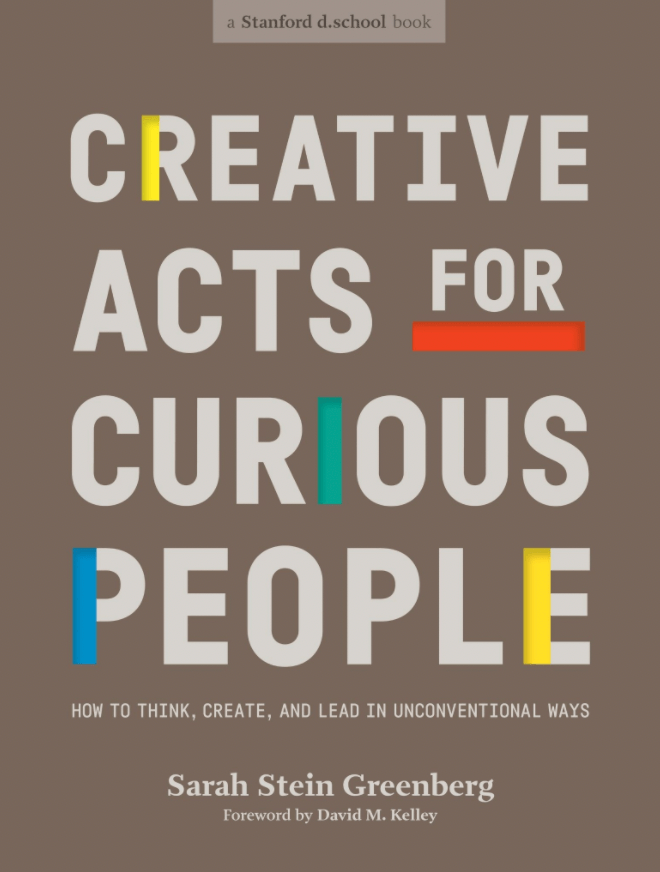What is design thinking, and how can it improve creative problem solving? Crack open d.school Executive Director Sarah Stein Greenberg’s new book for answers.
Released on Tuesday, “Creative Acts for Curious People: How to Think, Create and Lead in Unconventional Ways” is intended to share insights into the d.school’s approach to problem solving. The Stanford d.school is an interdisciplinary institute that promotes design thinking, a human-centered problem-solving strategy, to produce creative solutions.
Stein Greenberg said that she hopes “the book will be useful for really anybody who is trying to develop and build their own creative skills and use them to work on the problems and the challenges that are meaningful to them.”
“Creative Acts for Curious People” features a series of short chapters written by various authors, many of whom are faculty and instructors at the d.school. Each chapter presents a particular perspective on a design project.
Readers can also explore a curated list of assignments that have been developed over the years at the d.school. Such assignments, like coming up with an analogue for solving a problem or reflecting on a brainstorming experience, are designed to let readers channel their creative energy.
“Design is a way of responding to an opportunity or a problem where there isn’t a clear answer,” Stein Greenberg said. Creating the book in itself was an exercise in design thinking reliant on creativity, collaboration and experimentation.
“The way that we practice design at the d.school is very much about people,” Stein Greenberg said. “It’s about both the people that you are designing for and also the people you’re designing with.” She worked to highlight the importance of diverse perspectives by basing the content for the book on over 100 interviews with different people.
This robust collaboration is also exemplified by the work of illustrator and University of Utah assistant professor Michael Hirshon, who matched the book’s text with colorful artwork. Hirshon developed approximately 130 illustrations for “Creative Acts for Curious People.”
“I think it’s by far the largest project I’ve ever worked on. It took about 14 or 15 months to do,” Hirshon said. Despite the magnitude of the project, the artist made sure to create playful, creative images for the book.
“Creative Acts for Curious People” may be a strong introduction to design thinking, but why should you care about this problem-solving methodology in the first place? According to Stein Greenberg, the impact of design is widespread, from healthcare to education, engineering to media.
For example, design thinking has been the blueprint for a number of d.school spinoff organizations, such as Noora Health, Substantial and Civilla.
Students at the d.school attest to the importance of design thinking. Aishwarya Venkatramani, M.S. ’21 was involved in solving the issues of glaucoma as part of the Design for Extreme Affordability course. She and her classmates partnered with the Himalayan Cataract Project to develop wearable bracelets to maintain patient health records in Ghana.
According to Venkatramani, what the d.school teaches is unique in that it is both very creative and very applied.
“The d.school really helped us with learning to communicate with people on the ground, working remotely, and preparing for interviews or questionnaires,” she said.
Stein Greenberg’s hope is that through this book, more people will be willing to work through problems using design tools.
“None of us are fully equipped to deal with the range of challenges that we’re all facing in the world today. There’s a lot of uncertainty, there’s a lot of ambiguity about what the future is going to look like,” she said. “And I think design is a way that we can prepare ourselves to be able to navigate that kind of ambiguity and tackle the kinds of challenges that we don’t even have names for right now.”
